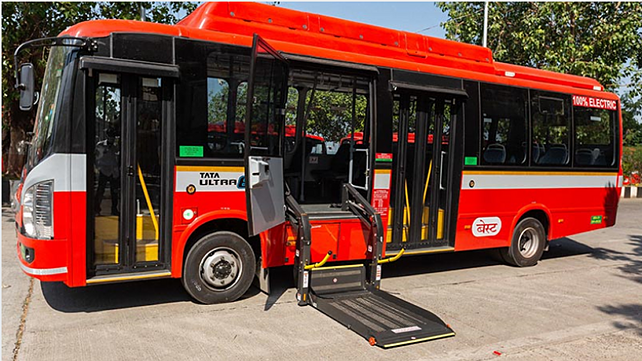
With an endeavour to push electrification of the fleet as well as boost electric mobility in the country, the Government of India had announced the second phase of the FAME scheme with an investment outlay of INR 10,000 crore.
However, the funds allocated to speed-up electrification of public transportation, personal mobility and charging infrastructure is still underutilised, as 98% of the allocated funds remain idle, two years after the scheme was announced.
This is staggering considering the fund allocation under FAME-II was done for a period of three years, which will end on March 31, 2022.
According to the Society of Manufacturers of Electric vehicles (SMEV), only INR 196.74 crore has so far been disbursed as a subsidy, from the total fund allotment of INR 10,000 crore. The primary reason for this is the stringent performance criteria set by the government to qualify for subsidies, as well as the increased focus on localisation in a short period of time.
As per the scheme, about INR 8,800 crore was to be given to electric vehicle buyers, while INR 1200 crore was allocated for setting up charging infrastructure. Unfortunately, the scheme that was meant to support one million two-wheelers, 500,000 three-wheelers, 55,000 cars and 7090 e-buses, has found no takers.
“By now, 50% of the funds should have been utilised, but actual utilisation is not even 5%. In the earlier scheme, 100% two-wheelers were eligible for the subsidy, which is now just 15%. And at one point of time, it was zero due to limitations,” said Sohinder Gill, Director General, SMEV and CEO, Hero Electric.
“The government also tried to utilise funds to electrify public transport. But most of the State Transport Undertakings (STUs) are either running in losses or are bankrupt. So funds set aside for buses also remain unused,” he added.

Industry sources we spoke to said there are orders for electric buses in the market, but banks are not ready to finance STUs.
However, many electric bus manufacturers including Olectra Green Tech, Tata Motors and JBM have received new orders for e-buses.
On the FAME-II subsidy, Nishant Arya, Executive Director, JBM Group said, “We believe that the FAME-II must be extended for a couple of years more for it to have a significant impact in the public transportation segment that already looks promising and aligned to the e-mobility goals of the government.”
The Department of Heavy Industries has been doing exceptional work with the various STUs in promoting electric vehicles pan India, Arya said.
JBM has witnessed positive momentum in the electric bus segment. The company is in discussion with over five states in the country with regard to deployment of its electric buses. The company is already operational in Gujarat, Maharashtra and in multiple other cities across the country.
We also reached out to Jitendra Sharma, Founder & MD, Okinawa Scooters to get his perspective on the FAME-II subsidy. “A lot depends upon on demand and supply. We must also understand that the full year of 2020 was under COVID-19. Things are improving now, and we believe proper utilisation of subsidy will happen this year.”
Localisation Norms of Electric Vehicles in India
The government had come up with stiff localisation targets within a month of announcing the FAME-II, or Faster Adoption and Manufacturing of (Hybrid &) Electric Vehicles scheme in the 2019 Union Budget.
As per the government notification, manufacturers need to ensure a minimum of 40% localised parts in electric buses and 50% localised content in electric three-wheelers, two-wheelers, cars and e-rickshaw to get the benefit of the scheme.
Industry experts felt the government’s intent to promote electric vehicle manufacturing in India is appreciable but at the same time, it has become a roadblock; as in a very short duration, it is not possible to set-up local supply chains.
Stringent Performance Criteria for Electric Two-wheelers
Under FAME-II, lead-acid battery-powered two-wheelers have been excluded from the scheme. Moreover, e-scooters ought to have a minimum range of 80 km per charge and a minimum top speed of 40 kmph, along with riders on energy consumption efficiency, minimum acceleration and a higher number of charging cycles. This precludes more than 90% of the remaining lithium-ion battery-driven models from the subsidy.
“Our assessment of the product portfolio of various EV manufacturers indicates that the electric two-wheeler segment would be impacted the most by FAME-II rules. We believe more than 95% of the electric two-wheeler models being produced now won’t be eligible for incentive under FAME-II,” ratings and research company CRISIL said in one of its report.
Reduced Incentives in FAME-II
Under the FAME-II scheme, the government is providing INR 10,000 per kWh of battery used for a two-wheeler. As the average size of a lithium-ion battery in electric scooters sold during FAME-I was ~1.5 kWh (average subsidy of INR ~15,000 per vehicle), it reduced the average subsidy per vehicle by INR 2,000 to 7,000.
In FAME-I, the incentive for lithium-ion battery-based two-wheelers stood at INR 17,000 or INR 22,000, based on the fuel savings potential and irrespective of the size of the battery.